Do You Really Need a Kettlebell, or Will a Dumbbell Do the Job?
Share
Kettlebell vs Dumbbell: Which One Do You Actually Need?
1. Intro: The Great Gym Debate
Kettlebells have become the cool kid in the fitness world. From Instagram videos to CrossFit gyms, everyone seems to be swinging them. But here’s the million-dollar question: Do you really need a kettlebell, or can a dumbbell do the job just as well? The truth might surprise you. Let’s break it down.
2. What Makes a Kettlebell Special?
Kettlebells aren’t just about the weight—they’re about how that weight is distributed. The unique shape shifts the center of gravity, forcing your muscles, grip, and stabilizers to work differently. That’s why swings, cleans, and snatches feel so dynamic. They challenge balance and coordination, making them great for explosive, functional training.
The takeaway: kettlebells shine for power moves, grip endurance, and athletic conditioning.
3. What Dumbbells Bring to the Table
Enter the dumbbell: the OG of strength training. They’re versatile, practical, and nearly every gym has them lined up. Unlike kettlebells, dumbbells give you control and stability, which makes them excellent for strength and hypertrophy training.
Here’s why dumbbells hold their ground:
- Versatility: From curls to presses, squats to rows, they do it all.
- Accessibility: You can find them anywhere, from commercial gyms to compact home setups.
- Beginner-Friendly: The grip is intuitive, and the learning curve is minimal.
- Muscle Focus: Controlled movement makes them perfect for targeted muscle growth.
The bottom line: dumbbells may not look as flashy, but they’re reliable, versatile, and effective for almost every goal.
4. Can You Use a Dumbbell Instead of a Kettlebell?
Yes—you absolutely can. Many kettlebell moves can be replicated with a dumbbell, with only slight adjustments in grip and form.
Here are some examples:
|
Kettlebell Move |
Dumbbell Alternative |
Notes |
|
Two-Hand Swing |
Dumbbell Swing |
Hold one end and follow the same hip hinge. |
|
Goblet Squat |
Goblet Squat (same) |
Hold a dumbbell vertically at your chest. |
|
Overhead Press |
Dumbbell Press |
Smooth, controlled movement overhead. |
|
Single-Arm Row |
One-Arm Dumbbell Row |
Identical movement, same strength benefits. |
The feel is slightly different, but the benefits—strength, endurance, calorie burn—are still there.
5. Pros & Cons: Dumbbell vs Kettlebell
|
Feature |
Dumbbell |
Kettlebell |
|
Versatility |
Great for isolation and controlled lifts |
Great for dynamic, explosive full-body movements |
|
Grip & Handling |
Simple, beginner-friendly grip |
Offset handle builds grip strength and stability |
|
Space & Storage |
Easy to store, especially with adjustable sets |
Bulkier, less convenient for small spaces |
|
Learning Curve |
Easy to master |
Requires more technique for swings and snatches |
|
Strength Focus |
Ideal for hypertrophy and targeted training |
Ideal for functional strength and conditioning |
6. Who Should Choose What?
- Beginners and Home Gym Owners: Dumbbells are the smarter first choice. They’re affordable, versatile, and don’t require mastering complex movements.
- CrossFit and Functional Fitness Fans: Kettlebells add an edge for dynamic workouts.
- Budget-Conscious Lifters: Dumbbells give you maximum variety without the need for multiple specialty tools.
But here’s the best part—you don’t have to pick one forever. With the right equipment, you can combine both styles of training into a single, flexible solution.
7. Workout Plan: Dumbbell Instead of Kettlebell
Ready to test it out? Here’s a simple 5-move routine to prove dumbbells can hang with kettlebells:
- Dumbbell Swing – Hold one end of the dumbbell, hinge at the hips, and drive it forward.
- Goblet Squat – Hold vertically at your chest for deep, controlled squats.
- One-Arm Dumbbell Clean – Explosive drive from hips to shoulders.
- Dumbbell Snatch – Smooth single-arm pull from floor to overhead.
- Russian Twist with Dumbbell – Core rotation for oblique burn.
Perform 3 rounds of 10–12 reps each. For conditioning, turn it into a timed circuit.
Want an even better solution? Check out this versatile set that lets you train with dumbbells, kettlebells, and a barbell in one:
Adjustable Dumbbell Kettlebell Barbell Set (3–40 lb)
8. FAQ Section
Q: Can you safely do kettlebell swings with dumbbells?
Yes—just grip one head securely and keep form tight.
Q: Are dumbbells better for strength than kettlebells?
For pure strength and muscle growth, yes. Dumbbells provide more stability for progressive overload.
Q: Do I need both for a home gym?
Not necessarily. A quality dumbbell set can replace 90% of kettlebell work. But if you want variety and explosive training, kettlebells are nice to have.
9. Conclusion: Do You Really Need Both?
Kettlebells are fantastic—but they’re not mandatory. For most lifters, dumbbells cover nearly every movement and provide more flexibility in training. They’re easier to use, easier to store, and better for building raw strength and muscle.
If you want the best of both worlds without buying separate equipment, invest in a set that transforms into dumbbells, kettlebells, and even a barbell.
Grab your Adjustable Dumbbell Kettlebell Barbell Set (3–40 lb) here and start training smarter, not harder.
